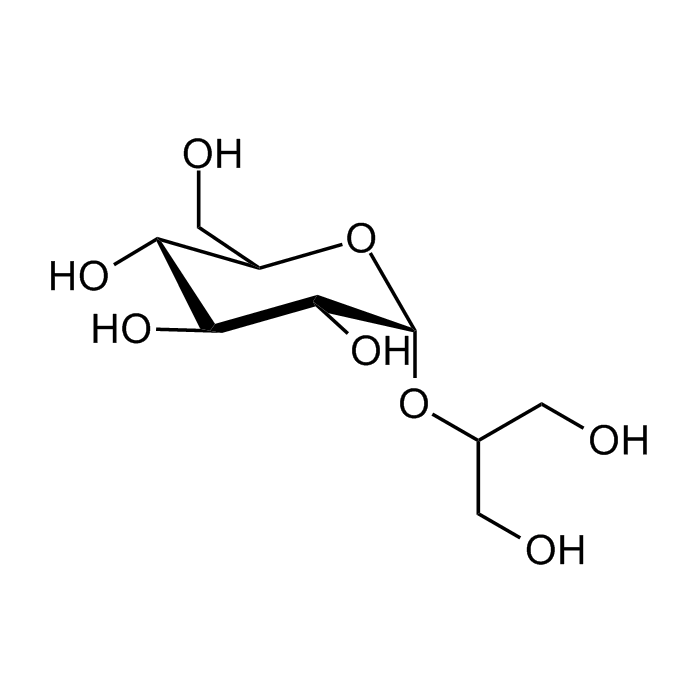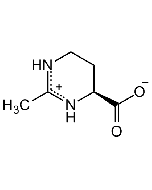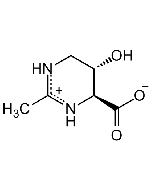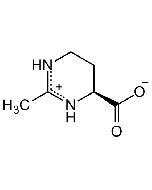Cookie Policy: This site uses cookies to improve your experience. You can find out more about our use of cookies in our Privacy Policy. By continuing to browse this site you agree to our use of cookies.
AdipoGen Life Sciences
Glucosylglycerol
As low as
CHF 0.00
In stock
Only %1 left
AG-CN2-0393-G0011 gCHF 34.00
AG-CN2-0393-G01010 gCHF 155.00
AG-CN2-0393-G100100 gCHF 1’162.00
AG-CN2-0393-GT011000 gINQ

Comparison of stabilization effect of glucosylglycerol vs. ectoine on antibodies during freeze/thaw cycles. Antibodies (Rabbit Ig, 5ng) were added to 1ml of the glucosylglycerol or ectoine solutions or to PBS buffer and subjected to three freeze/thaw cycles at -80˚C/+65˚C. Remaining antibody activity was determined by ELISA. Glucosylglycerol outperforms ectoine in this application. 60% of the antibody binding activity remains after three freeze thaw cycles in the presence of 50mM glucosylglycerol.
| Product Details | |
|---|---|
| Synonyms | Glucosyl glycerol; Glyceryl glucoside; α-D-Glucopyranoside; α-D-Glucosylglycerol; 2-O-(α-D-glucopyranosyl)-sn-glycerin; Glycoin |
| Product Type | Chemical |
| Properties | |
| Formula |
C9H18O8 |
| MW | 254.2 |
| CAS | 22160-26-5 |
| Source/Host Chemicals | Enzymatically processed from natural sucrose and glycerine. |
| Purity Chemicals | >99% (HPLC) (enantiopure active isomer) |
| Appearance | Slightly yellowish liquid. |
| Solubility | Soluble in water. |
| Formulation | 50% w/w aqueous solution without proteins or preservatives. |
| Endotoxin Content | ≤5000EU/g |
| Declaration | Manufactured by bitop AG, Dortmund/Germany. |
| InChi Key | AQTKXCPRNZDOJU-ZEBDFXRSSA-N |
| Smiles | O[C@H]([C@@H](CO)O[C@H](OC(CO)CO)[C@@H]1O)[C@@H]1O |
| Shipping and Handling | |
| Shipping | AMBIENT |
| Short Term Storage | +4°C |
| Long Term Storage | +4°C |
| Handling Advice | Keep cool and dry. |
| Use/Stability | Stable for at least 2 years after receipt when stored at +4°C. |
| Documents | |
| MSDS |
 Download PDF Download PDF |
| Product Specification Sheet | |
| Datasheet |
 Download PDF Download PDF |
Description
- Glucosylglycerol belongs to the class of compatible solutes (osmolytes). It is a non-toxic, non-irritating protective osmolyte responsible for the osmotic adaptation of blue-green algae, rhizobacteria and Pseudomonas and also found in the drought-resistant 'resurrection plant' Myrothamnus flabellifolia. Glucosylglycerol protects its host against osmotic stress, heat, desiccation and UV.
- Glucosylglycerol is an animal free and protein-free low molecular weight stabilizer which is an excellent cryoprotector for proteins in vitro, especially antibodies.
- In vitro models and skin models demonstrate strong activity of glucosylglycerol on aged and stressed skin cells with rejuvenating, recovering and radical scavenging properties. In vivo treatments confirm positive effects on increased skin elasticity, smoothness and thickness, the epidermis and dermis density regenerate with no irritating effects. It is used as a multifunctional anti-aging, cell-stimulating and skin moisturizing agent in cosmetics.
- This glucosylglycerol preparation is a 100% natural sugar derivative produced by an enzymatic reaction process. It is enantiopure and contains only the natural and functionally active isomer (2-alpha-GG), which is present in the desert resurrection plant Myrothamnus flabellifolia.
Product References
- Chemoenzymatic synthesis and antitumor promoting activity of 6'- and 3-esters of 2-O-beta-D-glucosylglycerol: D: Colombo, et al.; Bioorg. Med. Chem. 7, 1867 (1999)
- Synthesis of alpha-D-glucosylglycerol by alpha-glucosidase and some of its characteristics: F. Takenaka & H. Uchiyama; Biosci. Biotechnol. Biochem. 64, 1821 (2000)
- Glucosylglycerol, a compatible solute, sustains cell division under salt stress: A. Ferjani, et al.; Plant. Physiol. 131, 1628 (2003)
- Stabilization of model membranes during drying by compatible solutes involved in the stress tolerance of plants and microorganisms: D. K. Hincha & M. Hagemann; Biochem. J. 383, 277 (2004)
- A high-yielding biocatalytic process for the production of 2-O-(alpha-D-glucopyranosyl)-sn-glycerol, a natural osmolyte and useful moisturizing ingredient: C. Goedl, et al.; Angew. Chem. Int. Ed. Engl. 47, 10086 (2008)
- Glucosylglycerate: a secondary compatible solute common to marine cyanobacteria from nitrogen-poor environments: S. Klahn, et al.; Environ. Microbiol. 12, 83 (2010)
- Effects of topical application of alpha-D-glucosylglycerol on dermal levels of insulin-like growth factor-i in mice and on facial skin elasticity in humans: N. Harada, et al.; Biosci. Biotechnol. Biochem. 74, 759 (2010)
- Glucosylglycerol and glucosylglycerate as enzyme stabilizers: T. Sawangwan, et al.; Biotechnol. J. 5, 187 (2010)
- Compatible solute biosynthesis in cyanobacteria: S. Klahn & M. Hagemann; Environ. Microbiol. 13, 551 (2011) (Review)
- Molecular biology of cyanobacterial salt acclimation: M. Hagemann; FEMS Microbiol. Rev. 35, 87 (2011)
- Biosynthesis, biotechnological production, and applications of glucosylglycerols: X. Tan, et al.; Appl. Microbiol. Biotechnol. 100, 6131 (2016) (Review)
- Salt-Regulated Accumulation of the Compatible Solutes Sucrose and Glucosylglycerol in Cyanobacteria and Its Biotechnological Potential: F. Kirsch, et al.; Front. Microbiol. 10, 2139 (2019) (Review)








